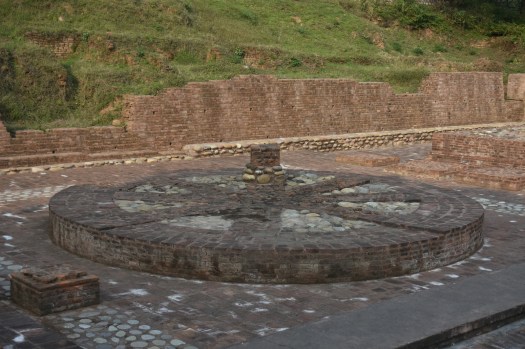Ambaran Buddhist Stupa- Jammu And Kashmir

Address
Ambaran Buddhist Stupa- Ambaran, Akhnoor, Jammu And Kashmir- 181201
Diety
Buddha
Introduction
A Buddhist monastic complex on the right bank of river Chenab, at Ambaran, near Akhnoor and dates back from 1st century BCE to 4th-5th century CE, gave a strong physical proof of a vibrant Buddhist phase in Jammu.. Some coins, terracotta beads and other articles of Kaniska- the great Kushan Emperor unearthed there and is exhibited in a small gallery. The site was abandoned during the seventh Century AD due to flash floods in the area and the decline of Buddhism in the region. While the remains of the platform are there for visitors to see, the superstructure is missing. Many terracotta heads and a gold casket were unearthed here. Ambaran also locally known as Pambaran is a village of Akhnoor tehsil. Is said to have been founded by Amba Jagdev Pawar a scion of Pawar dynasty of Dhar Ujjain and seems to have been the original capital of Akhnoor.
Puranic Significance
The excavations at the site started around 1990 even though a lot of terracota figures (7th century A.D.) now known as “Akhnoor Buddhist terracotta heads with Greeco-Roman influence” had been found in Akhnoor around 1950s. The figures are closely related to figures found at Ushkur near Baramulla, Kashmir. The site is dated along 4 periods: Period I: Pre-Kushan period (circa second first century B. C.) Period II: Kushan period (circa first to third century B. C.) Period III: Post-Kushan (Gupta) period (circa forth fifth century A. D.) Period IV: Post Gupta period (circa sixth seventh century A. D.) But unfortunately, the archeological site of Ambaran, which due to its unique historical importance especially in terms of development of Buddhism in Jammu that led to spread of Buddhism in Kashmir and from there on to Central Asia, continues to receive the same run of the mill treatment that is meted by Archaeological Survey of India (ASI) to its numerous protected monuments all over the country. In fact after more than 13 years since the site was first excavated, the unearthed remains of the foundations of stupas, monastic cells, still await a protective shed. With the result every year during the rainy season, heavy rains take toll of the fragile remnants of more than 2000 years old monastic complex as it is often flooded with water discharge from adjoining uphill slopes. The discovery of a Buddhist monastic complex on the right bank of river Chenab, at Ambaran, near Akhnoor and dateable from 1st century BCE to 4th-5th century CE, gave a strong physical proof of a vibrant Buddhist phase in Jammu.
Century/Period/Age
1st century BCE to 4th-5th century CE
Managed By
Archaeological Survey of India (ASI)
Nearest Bus Station
Ambaram
Nearest Railway Station
Srinagar
Nearest Airport
Jammu




